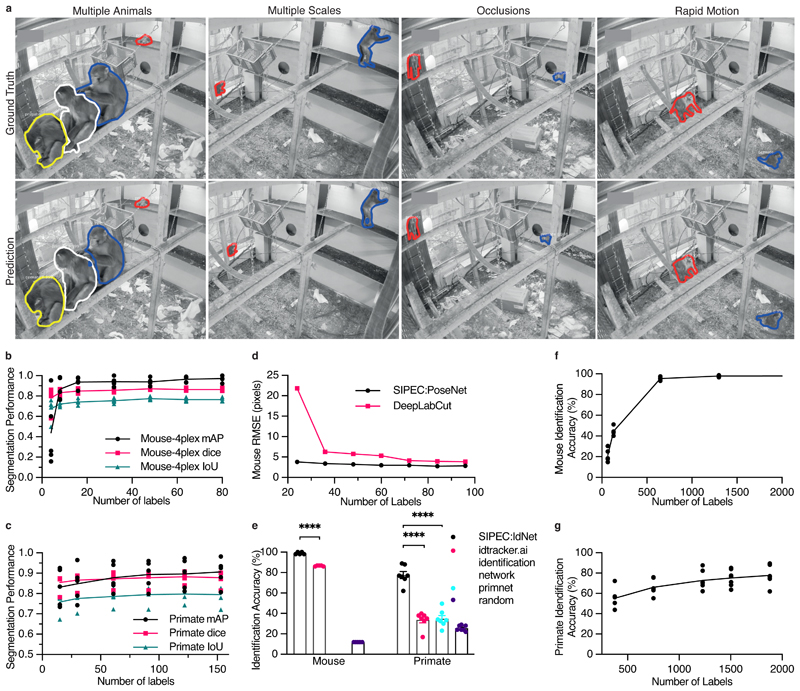Fig. 2. Performance of the segmentation (SIPEC:SegNet), pose estimation (SIPEC:PoseNet), and identification (SIPEC:IdNet) modules under demanding video conditions and using few labels.
a) Qualitative comparison of ground truth (top row) versus predicted segmentation masks (bottom row) under challenging conditions; multiple animals, at varying distances from the camera, under strong visual occlusions, and in rapid motions. b) For mice, SIPEC:SegNet performance in mAP (mean average precision), dice (dice coefficient), and IoU (intersection over union) as a function of the number of labels. The lines indicate the means for 5-fold CV while circles, squares, triangles indicate the mAP, dice, and IoU, respectively, for individual folds. c) For primates, SIPEC:SegNet performance in mAP, dice, and IoU as a function of the number of labels. The lines indicate the means for 5-fold CV while circles, squares, triangles indicate the mAP, dice, and IoU, respectively, for individual folds. d) The performance of SIPEC:PoseNet in comparison to DeepLabCut measured as RMSE in pixels on single mouse pose estimation data. e). Comparison of identification accuracy for SIPEC:IdNet module, idtracker.ai4, primnet31 and randomly shuffled labels (chance performance). 8 videos from 8 individual mice and 7 videos across 4 different days from 4 group-housed primates are used. f) For mice, the accuracy of SIPEC:IdNet as a function of the number of training labels used. The black lines indicate the mean for 5-fold CV with individual folds displayed. g) For primates, the accuracy of SIPEC:IdNet as a function of the number of training labels used. The black lines indicate the mean for 5-fold CV with individual folds displayed. All data is represented by mean, showing all points.

